The Doyle Rotary Engine
One of the cool things about the SAE World Congress is that there’s always at least a couple of radical new engine designs. Scuderi was back with their split cycle compressed air hybrid, only this time with a turbo that lets them use a much smaller piston on the intake side, reducing friction. FEV showed an engine optimized for compressed natural gas, with turbocharging, long intake runners, and a piston designed to increase turbulence. Two exhibitors were at the SAE for the first time. Grail Engine Technologies was showing their atmospheric-valve-in-piston engine that routes the induction through the crankcase and up into the combustion chamber.
What Do You Think The EcoBoost Take Rate Is On F-150?
As TTAC explained last November, the EcoBoost engine might be the best argument for the Lincoln brand, as MKS and MKT enjoyed 30% and 46% Ecoboost take rates respectively, while Taurus and Flex convinced only 14.2% and 11%of their buyers respectively to plump for the turbocharged engine. So, what do you think the take rate was for the Ecoboost engine in the F-150? You know, the one which gets good fuel economy (unless you’re towing a lot), but has to fight for recognition amid a crowd of options? Well? Write down your answer and hit the jump…
Hyundai To Hunt The Prius
Hyundai updated its web-only “save the asterisks” video for the New York Auto Show, as it continues to highlight fuel economy as a key brand value. And the brand didn’t miss the opportunity to talk about future fuel-efficient products either, as InsideLine reports that Hyundai is promising two more vehicles rated at 40 MPG highway or above in the “next couple of years.” One is the Prius competitor, which was previewed with the Blue Will concept, and which appears to now be a dedicated hybrid-only model, after having been initially tipped as a plug-in hybrid. The other? Hyundai won’t say, but an exec does tell the Edmunds blog that
The strategy of further developing the internal-combustion engine, with significant increases in fuel economy, is where we see the market going
So, something non-hybrid… perhaps the i10 A-segment hatch that Hyundai USA recently let us drive? The Europe-only i40 wagon? What about the Euro-market ix20 subcompact MPV? Or are we waiting for something brand new?
2012 Mazda3: More Efficient, Less Happy
Are You Sould On Kia's Updated Soul?
Like the Subaru Impreza, Kia’s Soul is a car that I’ve nursed a soft spot for ever since it became the first car I ever reviewed for TTAC. When friends approach me asking for advice about practical, flexible low-cost cars, the Soul is often one of my first suggestions, and nobody has ever regretted at least test-driving one. The Soul earned further brownie points from me during the Detroit Auto Show a few months back, when our rental Soul carted us through a nasty snowstorm with aplomb. So, like the Impreza, I was a little bit nervous when Kia announced they would be updating the Soul at the New York Auto Show.
Japanese Parts Paralysis: Nissan's Iwaki Engine Plant Back On-line
Nissan’s Iwaki engine plant is back on line, as this video from Nissan’s in-house channel attests. The plant, located some 35 miles away from the stricken Fukushima power plant, was severely damaged by the quake and had been off-line ever since March 11.
This Is Definitely Not The 2012 Nissan Micra… But Shouldn't It Be?
Chart Of The Day: Does The EcoBoost F-150 "Fail" At Fuel Economy?
Bringing out a V6 version of a full-size truck like the F-150 is a good way to get truck guys suspicious, especially if you try to assuage their fears by talking about the engine’s direct-injection, turbocharging and other high-tech frippery. Ford’s solution: emphasize the “power of a V8, efficiency of a V6” simplification, and hope the market catches on as gas prices rise. But does Ford’s marketing concept actually hold true in real life? Does an Ecoboost F-150 get the mileage of a six cylinder even when doing tough truck-guy work? Thanks to some great work by Pickuptrucks.com, you can decide for yourself using the data from a fantastic infographic used to illustrate their test of a loaded and unloaded Ecoboost F-150.
BYD Scores Another Chinese First: Direct-Injection, Dual-Clutch Drivetrain
BYD made a big splash a few years back when it became the first Chinese automaker to develop a highway-capable plug-in vehicle. That announcement brought a flurry of publicity and a Warren Buffett investment in the firm, but has yet to translate into real plugin sales success. Now, BYD is making a big splash again, by announcing another first for a Chinese automaker: an in-house, stratified-injection, all-aluminum turbocharged engine with a dual-clutch transmission. The 1.5 liter engine creates 178 lb-ft of torque from 1750-3500 RPMs, according to a BYD release, putting “[power] equivalent to a 2.4 liter gasoline engine” through “an advanced 6-Speed Tiptronic dual-clutch design” transmission. BYD insists that the drivetrain’s technology was developed in-house, but some may point to the firm’s ties to VW as a source of the know-how in China’s first modern engine.
Phrase Of The Day: "Torsional Excitations"
What keeps powertrain engineers up at night? C’mon, get your mind out of the gutter. The move towards downsized, turbocharged engines is creating a number of new engineering challenges, and “torsional excitations” grabbed the spotlight at this year’s Society of Automotive Engineers Congress. Steven Thomas, manager of Ford’s global transmission and driveline, research and advanced engineering, illuminated the issue [via Wards].
As we reduce the engine torque, particularly just off idle prior to the boost coming on, we’re going to adversely impact the ability to accelerate the vehicle. I would challenge you all to think about new ways of dealing with this. We could really use new designs to deal with these challenges to optimize the fuel economy, but at the same time deal with (noise, vibration and harshness) and performance issues presented by these new engines.
The problem: the increased inertia of forced-induction engines. The practical example: a turbocharged Fiesta. A worthy adversary, a worthy cause. Let’s do this.
BMW: Born From Robots?
SRX Gets 3.6 Fix
Back in January, when news broke that GM would be pulling its 2.8T V6 from the Cadillac lineup, I reckoned that
Cadillac needs to figure out if it wants to keep its SRX saddled to an underwhelming engine, or if it wants to add its widely-lauded 3.6 direct injection V6 to the SRX lineup.
And you know what? Cadillac made the right call (or at least the obvious one). But will GM seal the deal and drop the unloved 3.0?
Will PSA's New China Engine Suck?
Many equate China with smoke and soot belching cars. In reality, China’s emission and fuel consumption standards now generally follow the European roadmap. Implementation of standards trails the European role model by only a few years. Ironically, it is a European brand that just ran afoul of this misperception – if Chinese media is correctly informed.
Jeep Hints (Again) At Diesel Wrangler, Grand Cherokee
Boxster Turbo Coming… But Not How You Think
It’s long been gospel among Porsche aficionados that Zuffenhausen will never turbocharge its mid-engined offerings, for fear they might wipe the road with the brand’s rear-engined flagship, the 911. But apparently the stricture against forced-induction Boxsters and Caymans only extends to the current generation. When the next round of mid-engined Porsches arrive in 2012, a turbocharged engine will definitely be offered… but only as the base model.
Are You Ready For: The Diesel Sportscar?
In the post-Veyron, post-Horsepower Wars world, “Responsible Performance” has been the catchphrase on the lips of every purveyor of performance cars. And with Audi and Nissan already set to brawl for EV sportscar niche that’s being abandoned by Tesla with the forthcoming end of production of its Roadster, diesel power seems to be benefiting from a second look by would-be “responsible performance” vendors.
Unsurprisingly, the tuning houses are promoting their diesel efforts, as EV tuning presents significant challenges to the ICE-based tuning community. And the BMW modifiers at AC Schnitzer are leading the way with this Z4 “99d,” a 188 HP, 310 lb-ft two-liter turbodiesel roadster capable of 146 MPH. Oh yes, and 99 grams of CO2 per Km, or (very roughly) 60-ish MPG (non-EPA). Sound like a healthy compromise between “responsibility” and performance? The only thing you’ll have to give up is the $210,000 that Automobile says this Schintzer concept would cost if it were built.
Ask The Best And Brightest: Wave Disc Engines?
We love staying ahead of the curve with new engine technologies like the Ecomotors OPOC engine, but without an engineering degree it can be hard to tell the the posers from the next big thing. So when something like the Wave Disc engine comes along, we throw ourselves upon the collective wisdom of our Best and rightest to help us make sense of it. In the video above, the Wave Disc engine’s creator, Michigan State’s Norbert Muller, explains his invention and its benefits including simplicity, light weight and efficiency. And, he claims, the technology is close enough to reality to have a Wave Disc-electric hybrid within three years. Hit the jump for more technical details, and be sure to let us know if this is worth watching or just another engineering dead-end.
What's Wrong With This Picture: Versa GTI? Edition
The greatest thing about the Nissan Juke is its absolute peach of an engine, a 1.6 liter, direct-injected, turbocharged little screamer. In fact it’s such a wickedly fun little engine that it’s a shame it exists only in a polarizing vehicle like the Juke. To that end, I noted in my review of Nissan’s funky “sportcross” that
Without the marketers, it’s tempting to believe that Nissan’s engineers would have widened the Versa platform, added the fantastic turbocharged engine, and then decided to simply put a steroidal Versa body on top, creating the king of all B-segment hot hatches.
Well, according to this shot from China Car Times, at least part of that fantasy is coming true. In this first shot of an updated “2011/2012” Tiida (Versa), you can see the phrase “DIG Turbo” gracing its flanks, suggesting that the Juke’s little 188 HP mill (or, at least a detuned version of same) could be headed to the next-gen Versa. Does this mean a high-po “GTI”-style variant is coming to America’s best-selling B-segment car? Let’s hope so. Frankly, the more vehicles that get that feisty little engine, the better. [Awesome “Engine porn” video for Nissan’s 1.6 DIG Turbo after the jump]
VW Counting Its Un-Hatched (Porsche-Powered) Alfas
Volkswagen’s long flirtation with Fiat’s Alfa Romeo brand has hit a few obstacles recently, as Fiat CEO Sergio Marchionne has been adamant that he won’t sell its money-losing brand to his European rival, saying
As long as I am CEO of Chrysler and Fiat, Mr [Ferdinand] Piech will never have Alfa Romeo. It’s hands-off. I told him. I will call him and I will email him. I’m not the one who bought Seat. He’s the one who bought it. I don’t know if he can [fix it], but he needs to try.
Which, as Bertel has pointed out, is a harsh burn: after all, VW may not be “winning the future” with its “Spanish Pontiac,” but at least it rescued SEAT from a struggling Fiat in the early 1980s. And now Herr Piech doesn’t want to take no for an answer, telling Autocar that it would fix Alfa up quick-smart. How? The same way VW might sex up its Audi brand: by using Porsche engines. Yes, really…
Health Effects Institute Studies The New Pollution
From Hybrids and plug-ins to direct-injection and HCCI, a number of new technologies hold the promise of ever-cleaner automobiles. But what if, by solving existing pollution problems with these new technologies, we create new pollution problems? That’s what the Health Effects Institute’s Special Committee on Emerging Technologies (SCET) looked into in its “Communication 16,” titled The Future of Vehicle Fuels and Technologies: Anticipating Health Benefits and Challenges [via GreenCarCongress, PDF here]. The findings? Gas Direct Injection (GDI) may improve efficiency, but particulate matter (PM) emissions are still a serious concern. Urea exhaust treatment systems for “clean diesel” engines
gives rise to concerns regarding the formation of nitrogen-containing compounds, including nitro-PAHs, in emissions and possibly other toxic compounds.
EVs have their own issues, including electromagnetic field (EMF) radiation and the possible introduction of battery materials into the environment through production or crashes. Both fuels with more than ten percent ethanol (E15, E20, E85) and biodiesel (B20) have not been sufficiently studied for exhaust pollutants. And even in “regular” gas, the use of metallic additives has not yet been fully tested for health risks. As a result of all of these untested effects of new automotive technologies, the HEI’s Research Committee will begin study of tailpipe emissions from vehicles using GDI, Urea exhaust treatment and biofuels, and will also study the toxicity of lithium and other battery components used in hybrid and electric vehicles. hopefully they’ll find that the cure isn’t worse than the disease…
Stump The Best And Brightest: What's Wrong With This Explorer?
This Is Why We Can't Have Diesels
Why don’t more mass-market brands offer diesel engine options? After all, the evidence suggests that the passenger cars that offer diesel options enjoy a healthy take rate for oil-burner engines. So would a brand like Ford ever consider bringing diesels to its US offerings? According to the Blue Oval’s Product Boss Derrick Kuzak, the answer is absolutely not. And, according to Automotive News [sub] he’s got an interesting reason for nixing a US-market diesel option.
With rising petroleum prices, one European journalist asked if Ford planned to alter its powertrain strategy and sell cars with diesel engines in the United States. The journalist mentioned that some European automakers offer diesels in the United States.
Kuzak said Ford “could easily bring diesels to the U. S. market.”
Then he quickly added: U.S. “customers, I think, are pragmatic.”
Too pragmatic for improved efficiency? Huh?
Piston Slap: Duratec Oil Leak, Explained
TTAC’s resident gasket engineer, gimmeamanual, shares some thoughts on a previous Piston Slap. For starters, let’s go back to the original problem. In his own words:
In the last post, the OP says that they have tracked the leak to the interface between the block and the oil pan. He also mentions a “spacer” as well as RTV. The Duratec 3.0L (D30) engine variants have used two different gasket designs for the oil pan, but I can’t remember which for which years; one design uses metal-backed gasket referred to as an “edge-bonded” gasket (no groove on either the pan or girdle), and one design uses a “press-in-place” design (groove in the oil pan).
Fidgeting between multiple designs for something as “not customer facing” as an oil pan gasket isn’t a very smart move. Then again, perhaps one design is more cost effective, and not likely to draw attention to itself until well past the warranty period? Think about that, next time we talk Corporate beancounting. But wait, there’s more:
The D30 is a split-block design where the oil pan is attached to the girdle, which is in turn attached to the block; the oil pan also bolts into the bottom of the front cover. The block-girdle interface is indeed sealed with RTV, but the girdle-pan interface is sealed with a gasket. Sounds like the metal spacer he is referring to is the metal backbone of the edge-bonded design, but hard to tell without pictures. For the RTV, it’s unclear where this RTV is, but there is RTV at the block/girdle/pan-front cover interface at what is called a T-joint, so named because the vertical “seam” of the front cover-girdle/pan runs into the horizontal “seam” of the pan-girdle-front cover.
Clear as mud? Here’s the punchline:
GM Denies US Diesel Cruze… For Now
Initial reports of a diesel version of the Chevy Cruze coming to the US market cited GM management sources who apparently told workers at the Cruze’s Lordstown, OH assembly plant they would begin building the diesel-powered Cruze for the 2013 model-year. But GM spokesfolks tell the Youngstown Vindicator.
GM has some of the most capable engineers in the world and very capable engineering in Europe. If and when the time comes, there is no doubt GM will be able to produce a diesel engine in America,
The implication being that a diesel Cruze is not imminent… but that doesn’t mean it will never happen. Local UAW boss Dave Green clarifies
I did see the report. I read where we may be getting some diesel-powered Cruzes, but we have not gotten word of that from our corporate offices
So… call the diesel Cruze a big maybe. At some point. Perhaps Chevy is waiting for t he Cruze five-door to come online before making an all-out bid for America’s “Mr Euro” market with a diesel hatchback.
Diesel Cruze Coming?
Quote Of The Weekend: Audi By Porsche Edition
Porsche’s greatest strength may well be that, in this era of automotive homogenization, it maintains its unique technical traditions. Until Subaru brought out a rarely-optioned 3.6 unit to market, Porsche was the only automaker who offered a flat-six engine, a powerplant that was both unique and traditional. But now, it seems that Porsche may have to give up its unique engines in the name of corporate strategy and its goal of remaining the world’s most profitable automaker [sub]. When asked by EVO magazine if, in the future, Audis could use Porsche’s brand-defining boxer-six engine, Porsche’s R&D boss Wolfgang Dürheimer responded
I think so, especially for the V8 side, but I can also see some applications for the Porsche flat-six and future flat-four engines across the VW group. I think it cannot hurt Audi to have a Porsche powerplant in its cars.
Yes, but what about Porsche? We’d heard a version of this rumor before, but this latest revelation seems to indicate that plans to share Porsche’s greasy bits are moving forward. Given that we’re moving towards the last hurrah of the internal-cumbustion engine, we’d hope that Porsche would hold onto its tradition of unique engines a bit longer. Apparently not.
Are You Ready For An Oil-Burning Porsche?
Who Killed The Twincharger?
This Is Not The Cadillac ATS Engine List
Lord love the car blogs. On the same day TTAC was fooled by a local TV report’s use of a forum photoshop, the rest of the autoblogosphere has gone bananas for an “alleged spec sheet” that is in fact pure speculation on the part of a member of the GM forum cheersandgears.com. Although the “document” in question “surfaced” in a forum poll entitled “2014 Cadillac ATS – Powertrain Predictions” (and was never presented as an official or “leaked” document), the High Gear Media Hive Mind proceeded to write up the “alleged spec sheet” as if they’d just found it in the RenCen’s executive washroom. Though unable to “confirm its authenticity,” the HGM Collective was able to determine that
the new Cadillac ATS-V will feature a 6.2-liter V-8 developing 470 horsepower and 428 pound-feet of torque. That’s more than the Mercedes-Benz C63 AMG, the bad boy of the current crop of executive sports sedans.
From there, it was inevitable that the big boys of the car blogging world would jump aboard the bandwagon, albeit with the decency to call the source a “speculative document” or “the rumormill.” Still, this document didn’t “surface”… it was put together by a fan who then asked the members of his forum to vote on whether they “love” or “hate” his speculative lineup. Meanwhile, in the rush to parrot the “news,” some basic considerations have been left out…
Porsche's New Engine: Flat-Four Under Develoment
Porsche’s planned “Baby Boxster” has been a divisive issue for fans of the Zuffenhausen brand: on the one hand it holds the promise of a pure, low-cost entry to the Porsche driving experience; on the other, it’s a neo-914, a Volkswagen first. And with VW and Audi versions planned as well, what on earth would be the point of Porsche offering a third version of a mid-mounted, inline-four-powered roadster? Luckily that’s not a problem Porsche will have to worry about, as the firm’s R&D boss has confirmed to Autocar that
We have a four-cylinder boxer engine under development.
The Quest For Accurate Engine Specs: Completed!
The Quest For Accurate Engine Specs
Going over Nissan’s specifications for the 2011 Quest minivan, I came across these for the engine, on both the media and the consumer site:
260 horsepower @ 5,200 rpm
240 foot-pounds @ 4,800 rpm
Some non-Nissan sites provide slightly different numbers:
253 horsepower @ 5,200 rpm
236 foot-pounds @ 4,800 rpm
So perhaps Nissan recently found a couple more horsepower then rounded both figures up to the nearest five.
Both sets of numbers instantly struck me as impossible.
Wither The Cadillac 2.8T V6?
When I attended the launch of the Buick Regal, Buick’s product reps were anxious to talk all about the forthcoming Buick Regal GS, the high-performance version of the Opel Insignia-based sedan. At the time, the Buick Boyz were anxious for input; what, they asked, would enthusiasts prefer: a manual transmission or all-wheel drive. My answer: all of the above. Surely, I thought, Buick would be bringing a rebadged version of the Opel Insignia OPC, with AWD and the GM 2.8T V6 from the Cadillac SRX Turbo and Saab 9-5 Aero. No, came the answer. The 2.8T was not approved for use in a Buick. Stung by past oversharing between divisions, GM had decided that the 260-325 HP, Australian-built LP9 engine would be limited to applications in Caddys and Saabs. But now, it seems that GM may have penned some kind of deal with Saab, as GMInsideNews reports that the LP9 has been discontinued from its last remaining Cadillac application, the SRX Turbo.
Chrysler To Get Dual Clutch Transmissions… By 2013
The Case For A Mercedes-Free Aston Martin
Is it a coincidence that, on the day the newswires fill up with reports of renewed cooperation between Aston Martin and Daimler’s Maybach brand, the British sportscar firm has released a video with the theme “one engine, one ethos”? After all, before Aston built a hideous concept on the Mercedes GL platform and Maybach asked Aston to develop a four-door concept, the assumption was that Aston wanted Mercedes engines to replace its aged Cologne-built V-12. Now, possibly motivated by Lotus’s engine flip-flop, it seems that Aston is taking pride in its elderly but unique 12-banger. Which seems like a smart move: high-end buyers often care more about pedigree than absolute performance, and being seen as an independent house rather than an engine customer shop certainly helps cultivate that image… even if it means sticking with an engine that’s based on a pair of Ford V6s. Especially when those two V6s sound so damn enchanting.
What's Wrong With This Picture?
In this vivid demonstration of how steel differs from aluminum, we see how a junkyard-turbocharged Mitsubishi V6 eats one of its own pistons.
Under Customer Pressure, Lotus Backs Away From Toyota Engines
Lotus has perplexed and antagonized a number of auto enthusiasts by announcing its intent to expand beyond niche sportscars and become a global sport-luxe brand in the vein of Porsche and Ferrari. By announcing five future cars at once, Lotus made an audacious splash in the industry, and painted a giant target on its back. At the same time, Lotus’s initial plans called for the use of Toyota V8s and hybrid systems, leading some to wonder if Lotus was even being audacious enough. After all, assuming it could play with Porsche’s and Ferraris using only mass-market customer engines was somehow cravenly conservative to the point of being obnoxiously ballsy. Surely Lotus realizes that bespoke drivetrains are crucial to building a global sportscar brand? Well, apparently the Hethel boys didn’t get it… at least until their potential customers made an issue of it.
What Do You Think The EcoBoost Take Rate Is?
Ford currently offers four vehicles with its EcoBoost-branded direct-injection, turbocharged V6: Taurus and Flex, and the Lincoln MKS and MKT. But what percentage of buyers do you think spends the $750 to $1,700 to upgrade to Ford’s engine technology of the future? Write down your guesses and hit the jump to see how close you were…
Looking Into The Future, Toyota Spots The Present
When Autoweek asks the R&D boss at an alt-drivetrain leader like Toyota what the future of its powertrain development looks like, one tends to hope for something revelatory in his answer. Instead, we get
In the next five years, the general trend is downsizing of engines and the use of turbochargers. Another development will be direct fuel injection.Gosh, really? So Toyota is going to follow automakers like Fiat and Hyundai (not to mention the entire industry) when it comes to spotting and adopting engine technologies like gas direct injection (GDI) and strategies like downsizing and turbocharging? With a late start on EVs as well as the suite of ICE-improving technologies, Toyota had better hope that hybrid sales stay strong… and that its hydrogen technology is affordable by 2015. Otherwise, there are plenty of other firms ready to lead the industry…Is This The Last Of The Lamborghini V12s?
Tata + JLR = More Profits For Ford?
Recently, I wrote about how Tata is reaping huge profits thanks to the acquisition of the “toxic” JLR brands. It was a huge gamble to buy them, but it paid off. Literally. Well, it appears that Tata’s growing profits are going to benefit not only Tata, but ironically, Ford, as well.
Does Efficiency-Per-Performance Matter?
We’ve already been impressed enough with the McLaren MP4-12C’s 3.8 liter turbocharged V8 to say it “looks like mechanical sex” and give it its own gallery. The super-compact, direct-injected engine develops in the neighborhood of 600 hp, giving the new McLaren the dangly bits to show a (similarly-priced) Ferrari 458 the way around a racetrack. And though McLaren clearly thinks the MP4-12C’s race-tested abilities will help build its brand into the new race-nerd standard, it’s also beating Ferrari at a new game that will become increasingly important with time: the C02-per-horsepower game. Ferrari’s 570 hp V8 emits 320 grams of C02 per kilometer, giving the Fezza a rating of .56 grams of C02 per km per horsepower. McLaren’s goal for its not-quite finalized MP4-12C drivetrain is a C02 emissions rating of below 300 gm per km, which would give the supercar closer to a .5 gram per km per horsepower rating. And though the direct-injected, downsized and turbocharged engine helps keep that number down, the MP4-12C’s dry weight is also 176 lbs lighter than the 458’s (2,866 versus 3,042).
Piston Slap: Duratec Headache Part II: SVT RestoMod Edition
TTAC Commentator sastexan writes:
I have another Ford Duratec question for Sajeev, knowing his enthusiasm [So to speak – SM] for this engine. My 12 1/2 year old daily driver, my first “real” car that I have been driving for 2/3 of my driving years – a ‘98.5 Contour SVT – has a major problem.
I was at Summit Point on Friday, and had oil starvation-no warning-just puff of smoke out exhaust, a loss of power and a noise, then engine quit – clutch in rolled off track just in time for oil to start gushing out. Oil kept dripping the next hour or two. Cannot visibly see damage, but dipstick is stuck. Mechanic today (5 days later) tried to turn over the engine to see if it would spin and if compression – said no compression and it spun a few times then he heard a bang and it locked up. Did zero disassembly.
Question 1 – is that an appropriate way to see if an engine is done for, especially knowing there is no oil in the crankcase?
Question 2 – is it worth finding someone to do a 3.0 upgrade (I don’t have the expertise, knowledge, time, or place to even fathom taking this on)?
TTAC Project: The Zombie Sierra
I’m going drifting. I’m going drifting dressed in the finest English brown velour ever to roll out of Dagenham, England. I’m going drifting in what this week’s Curbside Classic should have been, a 1983 Ford Sierra. And with that, I rejoin TTAC after a long hiatus due to our wonderful country sending me to various deserts to hunt for Osama bin Laden.
I have survived, although my Hilux did not after one ill-placed Taliban rocket sent shrapnel through the radiator. I also relish returning to write for one of the finest audiences I know, the Best and Brightest.
Diesel Options Enjoy One-Third Take Rate
What's Wrong With This Picture: Two Jettas, No Choice Edition
Notice a difference between these two pictures? No, not the fact that one is a sexy press shot and the other is a bush-league amateur snap. Both pictures show the 2011 Volkswagen Jetta, but one of them has a torsion beam rear axle, the other has a variation of the Golf’s multilink setup. One has a 2.5 liter blunt instrument of an engine and a slushbox, the other has a high-tech “twincharger” engine that won the International Engine Of The Year award two years running, mated to a dual-clutch ‘box. One has a nasty, plasticky interior, the other offers “higher quality materials and trim.” By now you’ve probably guessed that the less desirable of these two Jettas is the US version, and the fancy-pants version has just been announced for the European market…
Quote Of The Weekend: Viva Italia Edition Part Two
Quote Of The Day: From Our Cold, Dead Hands Edition
New Generation Of Motor Oil Mandated For 2011 Cars
[Update: Ooops; I didn’t notice that Sajeev already has a post questioning these oils’ testing regime. In case you missed it, or just want the heads up before you join that discussion, here it is, in the less-controversial version]
Few subjects stir up more controversy than motor oil. Now it’s time for the latest perpetual changing of the current required new oil for new cars. AutoNews reports that GM, Ford and Chrysler are making the switch to a new generation of oils for their 2011 vehicles, known by their grading as GF-5, SN, or in GM’s case, Dexos 1. Be aware: using any oil other than one of these may void the powertrain warranty. (I might have thought GM would have retired the “Dex” moniker).
Porsche Promises Across-The-Board Hybrid Options
Porsche has made much of its hybrid drivetrain development efforts, pointing out that its founder helped create the world’s first hybrid drivetrain one hundred years ago. But thus far, the talk has centered on Porsche’s “rolling hybrid laboratory,” the 911 GT3R Hybrid, and the Hybrid Cayenne, with the plug-in 918 Hypercar lurking across the horizon. But, Porsche’s development chief Wolfgang Duerheimer tells Automotive News [sub]
In the future, we will have hybrid drive in every model line
First up will be a Panamera with the Cayenne’s hybrid V6 drivetrain, arriving sometime next year. Duerheimer won’t give a timeline for hybrid versions of the 911, Boxster and Cayman, but he does admit that hybrid drivetrains aren’t the only way for a sportscar firm to shave off the 41 grams of C02 per kilometer that Porsche needs gone by 2015.
The Toyotafication Of The British Sports Car Brands
Aston Martin’s decision to sell a worked-over Toyota iQ has raised some serious questions for “brand values” advocates across the internet of late. Does an aristocratic sportscar brand need to take on the problems of urban congestion and carbon intensity? Does the Cygnet’s noblesse oblige PR value outweigh the furor of countless Aston Martin aspirants at the thought of their beloved brand becoming a glorified Toyota tuner house? The answer to both of these questions is apparently yes…
The Chevy Volt: As Efficient As You Want It To Be
If the recent flap over the Volt’s drivetrain has taught us anything it’s that A) GM’s internal-combustion-assisted plug-in is more complicated than we thought, and B) GM is fine with simplifying its complex reality in order to make it appear as attractive as possible. Which is just fine: they’re the ones trying to sell a $41k car, and as such they’re entitled to do what they can to make it seem worth its many shortcomings. What the automotive media needs to take away from the brou-ha-ha isn’t necessarily that GM’s hesitance to bring forward “the whole truth” is an intrinsically big deal (let’s just say this wasn’t the first time), but rather that knowledgeable writers should focus on explaining the Volt in ways that are both comprehensible and fully accurate. In this spirit, the most important question isn’t “what should we call the Volt?” but “how efficient is the Volt in the real world?”And on this point, there’s plenty of room for some truthful clarification.
Want To Save Gas? Get Rid Of Cylinders
There’s no replacement for displacement? Sure, as long as you own an oil well. If you want to save gas, there are three ways to do it:
- Make the car as light as can be (you can’t fool Newton.)
- Use the smallest amount of displacement you get get away with, and make it up with direct injection, a turbocharger, and computer smarts.
- Combine 1 with 2.
And what’s the easiest way to reduce displacement? Lose cylinders. That way, you also lose a lot of internal friction. If “Laufkultur” is part of your vocabulary, don’t read further, you’ll get sick. If you want to sick it to Big Oil, by all means, read on.
Chevy Volt: Truth And Consequences
The autoblogosphere is agog at the revelation that the Volt’s gas engine occasionally powers its wheels. The GM-created “category” of Extended-Range Electric Vehicles (EREV, or E-REV) as uniquely epitomized by the Volt is suddenly revealed [by Motor Trend via GM] to
[have] more in common with a Prius (and other Toyota, Ford, or Nissan Altima hybrids) than anyone suspected.
So, why did the putative “Father of the Volt” (aka “Maximum” Bob Lutz) tell the car’s primary fan site gm-volt.com that the Volt was born because
My desire was to put an electric car concept out there to show the world that unlike the press reports that painted GM as an unfeeling uncaring squanderer of petroleum resources while wonderful Toyota was reinventing the automobile, I just wanted something on the show stand that would show that hey we’re not just thinking of a Prius hybrid here, we’re trying to get gasoline out of the equation entirely.
?
Hyundai Sonata Turbo And The Economics Of Added Horsepower
For some people (you know who you are), the 200 horsepower provided by the 2011 Hyundai Sonata’s 2.4-liter four-cylinder base engine just isn’t enough. The traditional solution: a V6. But Hyundai, taking a page from Chrysler’s Iacocca-era playbook, has opted to offer a turbocharged 2.0-liter four instead. The specs look good: 274 horsepower at 6,000 rpm and 269 pound-feet of torque from 1,750 rpm. The pricing? Even better. The Hyundai Sonata SE 2.0T lists for $24,865, only $1,550 more than the regular Sonata SE. Are these the cheapest horses new car money can buy in a midsize sedan?
Subaru Reinvents The Boxer Engine, Minus The Direct Injection
There it is, Subaru’s all-new gen 3 engine, its first new boxer since 1989, and only the third since 1966 (full history here). As is obvious at first glance, Subaru has reverted to a DOHC head, after switching to a SOHC back in 2000. What’s not so apparent is that the internal architecture is very different: the boxer loses its oversquare (large bore/short stroke) configuration for… the opposite. Long strokes are in (again), favored for their compact combustion chambers and ideal torque curves. The new engine has a host of other goodies, and is expected to be 10% more efficient. But direct injection is not on the list. Nor is piston slap, hopefully.
What's Good For Ford Is Good For The UK
Remember that old saying, “What’s good for GM is good for America”? Well it seems that the UK is developing a similar ethos. “What’s good for Ford is good for the UK”. Now, this isn’t some arrogant Ford executive trying to brainwash the UK public that buying their cars is their public duty. There really is a good reason behind this. Honestly.









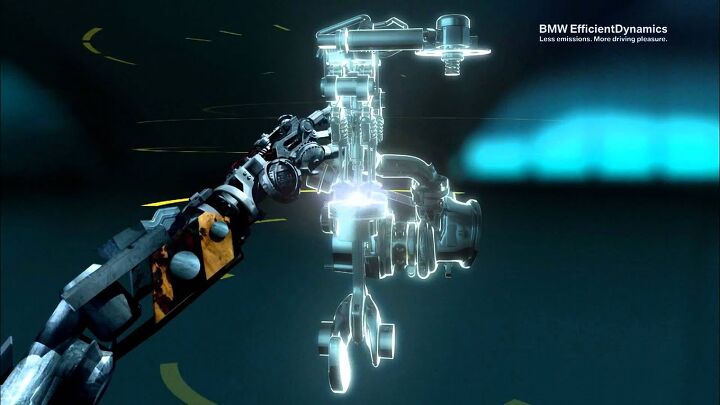
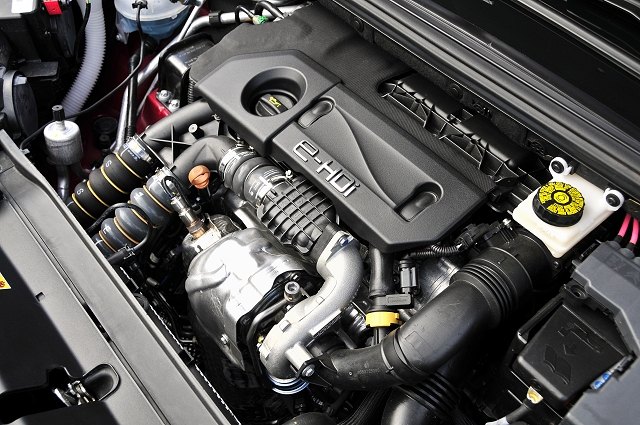
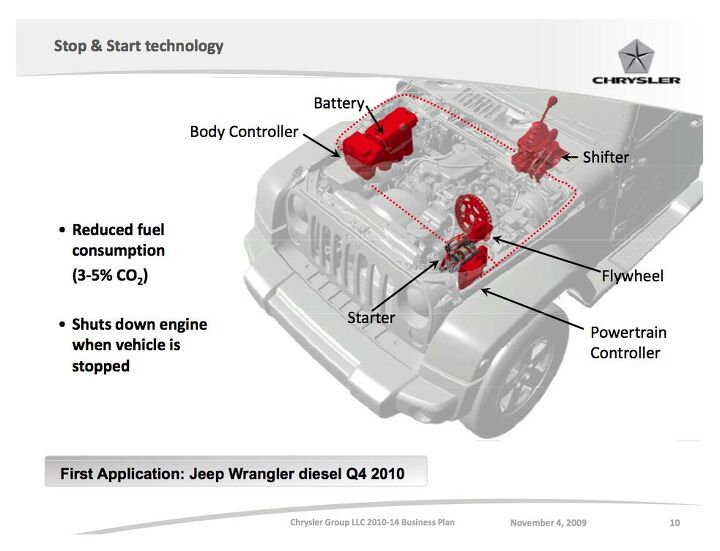






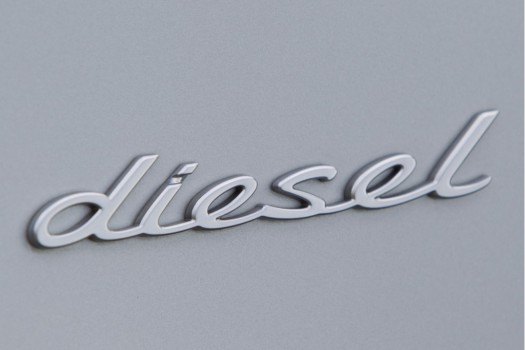
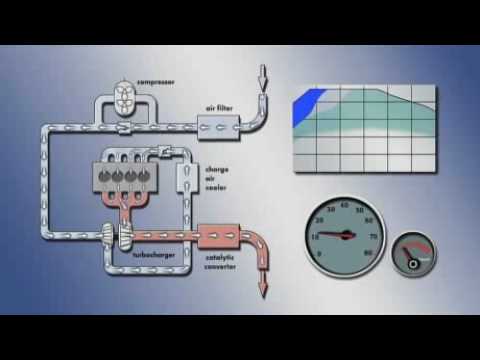


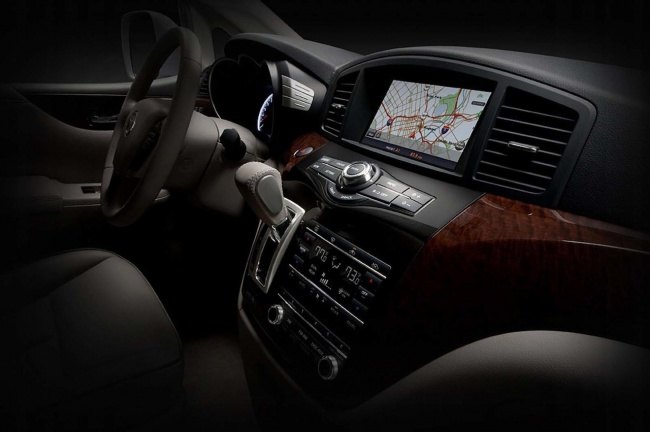


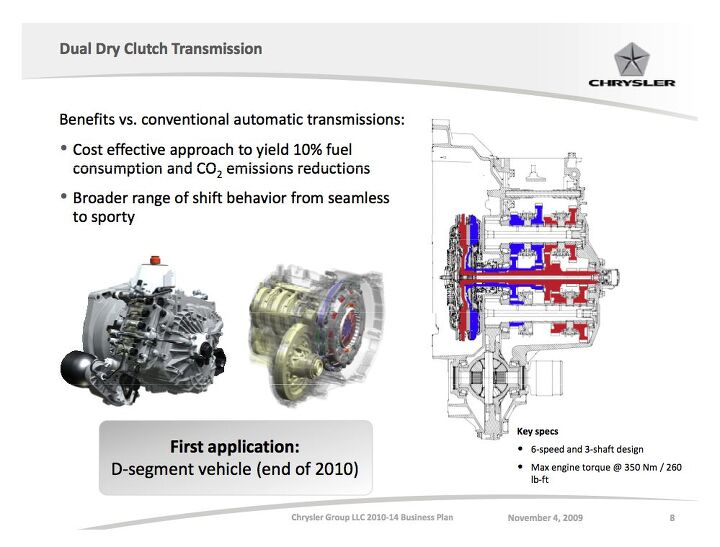


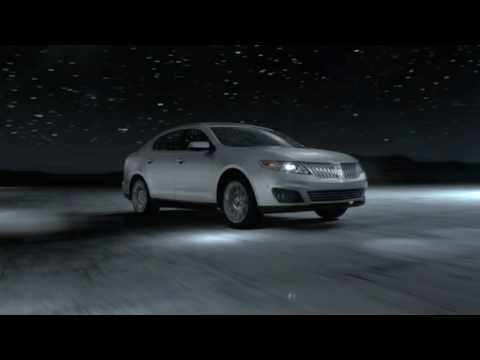



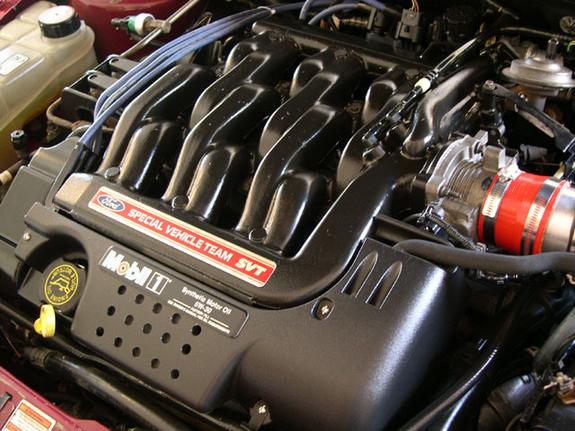



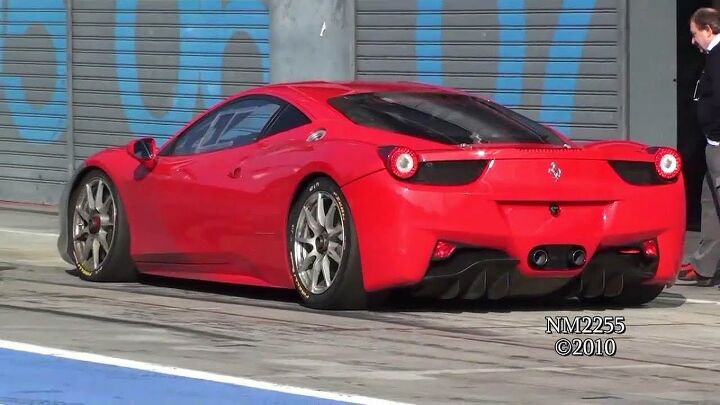



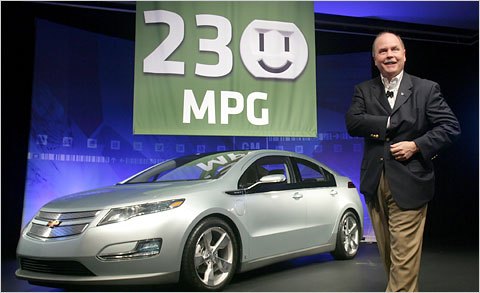
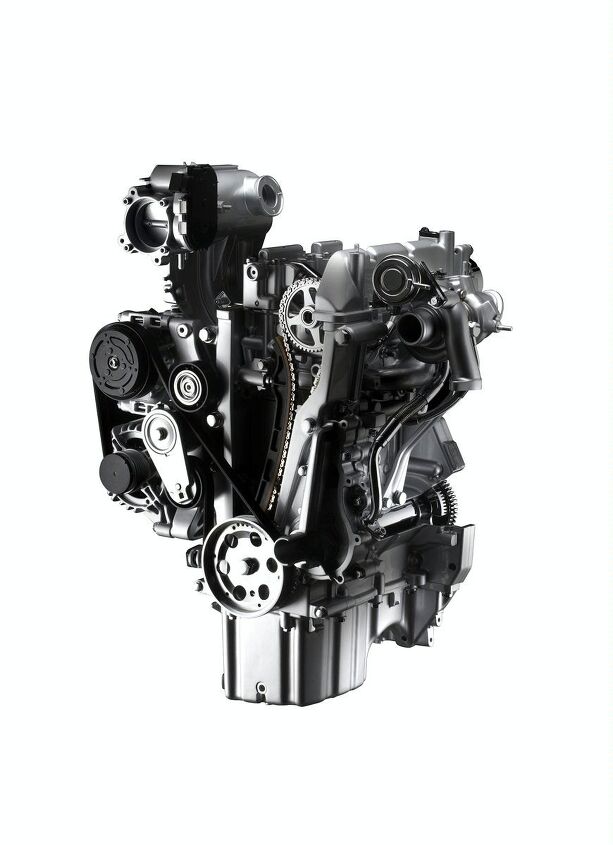
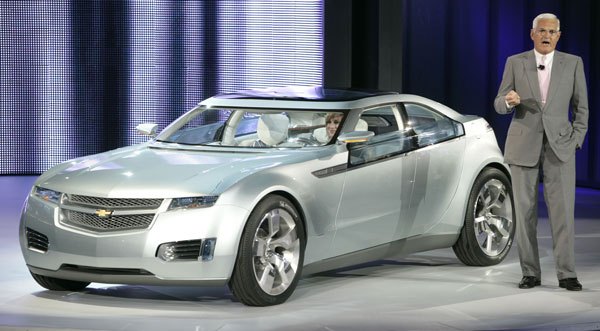
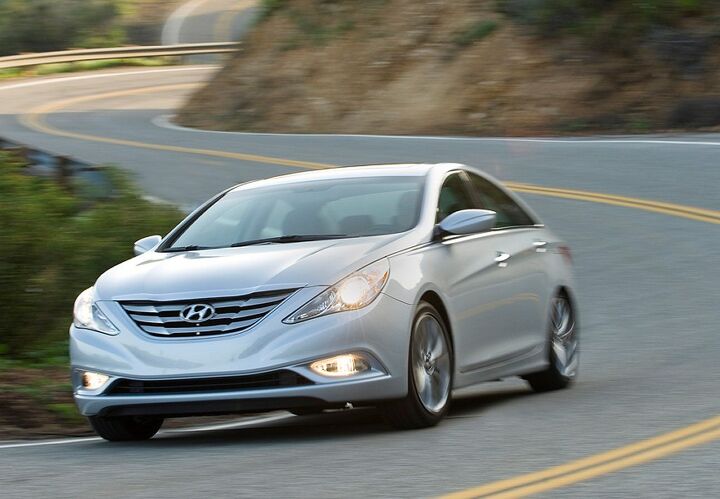
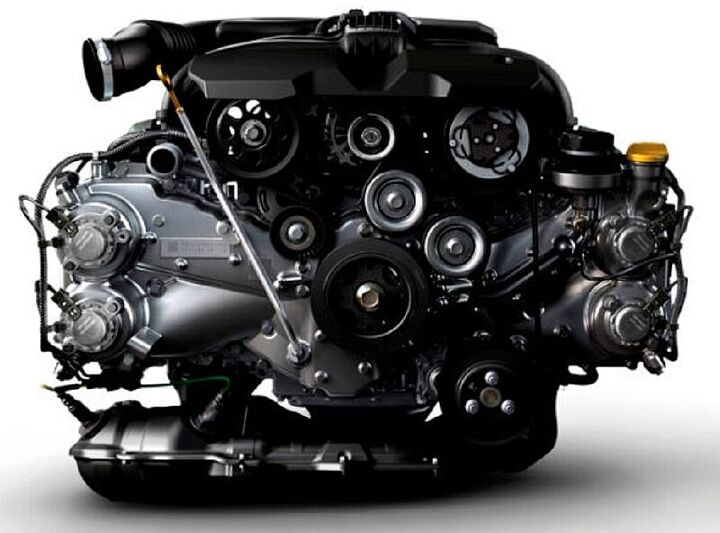
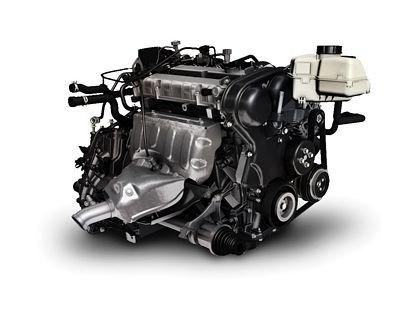
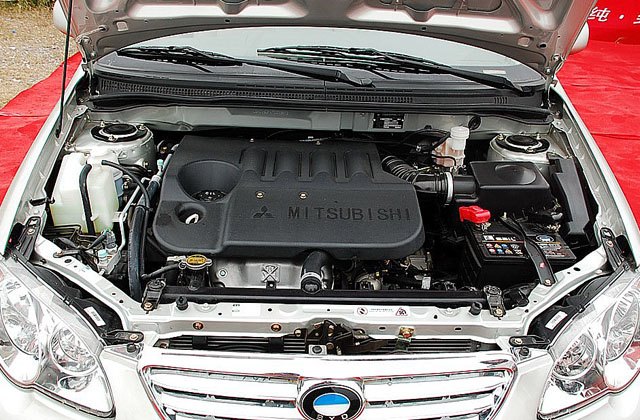
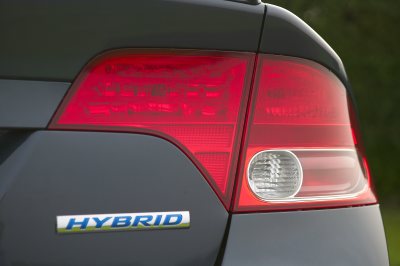













Recent Comments